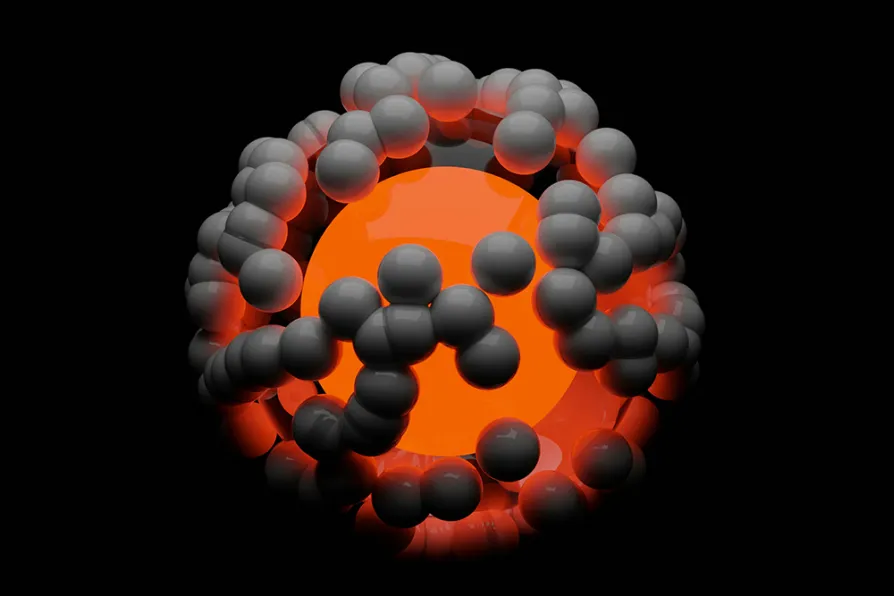Ten days after right-wing destabilisation attempts, Mexico’s leadership has emerged strengthened, securing historic labour and wage agreements, while opposition-backed protests have crumbled under scrutiny, says DAVID RABY
Neutrinos are so abundant that 400 trillion pass through your body every second. ROX MIDDLETON, LIAM SHAW and MIRIAM GAUNTLETT explain how scientists are seeking to know more about them

 [Pic: Shubham Dhage]
[Pic: Shubham Dhage]
WE LIVE in a world saturated with a type of particle that no human can feel — neutrinos. Large international collaborations aim to change that, taking aim at some of the biggest and strangest problems of physics.
Work has begun underground in the US on the Long Baseline Neutrino Facility (LBNF), the key part of the Deep Underground Neutrino Experiment (Dune — if you think communists love acronyms, you have to meet physicists).
Enormous caves are being hollowed out for a particle physics experiment of epic proportions, designed to observe and measure the smallest particles of all, neutrinos.
The apparatus consists of a huge particle accelerator and two detectors, one close to the source of the particles, and one 1,300km away. If everything goes according to plan, the detectors will be in place within five years, and the accelerator switched on in 2031.
The experiment is a demonstration of international collaboration, with involvement from 30 countries. Britain is heavily invested, both in contributing scientists and also financially, with £65 million from the government-funded Science and Technology Facilities Council (STFC).
Contemporary particle physics theorises that every particle, and all of their interactions, are disturbances, or waves, in fields that permeate the whole of space. Just as photons are light waves travelling through the electromagnetic field, particles with mass can be described in much the same way.
These particle-waves can interact with one another, or not. Some are invisible — or nearly invisible — to each other. Physics invites us to imagine the universe as a shimmering vibrating tapestry of particle-waves interwoven and interleaving at every point, most of the time passing right through one another without flinching.
We are bathed in a seething soup of particles. As well as the photons from space and those emanating from our own technology (radiowaves, wifi), we are also continually permeated by exotic particles from radioactive rock, from the Sun, from outer space, and from the beginning of the universe.
Neutrinos are so abundant that 400 trillion pass through your body every second, travelling from all reaches of the universe and sweeping through the Earth almost entirely untouched. It’s an extraordinary image — the emptiness of space between the atoms of the world is busy with tiny particles that flash right through us as if we didn’t exist.
The lack of interaction with other particles is an inherent property of neutrinos, and means they have historically been difficult to observe and measure. They also pose a problem for physics as its consensus stands today.
Neutrinos have a tiny mass, around a millionth that of an electron. But the “standard model” — the most complete and successful synthesis of modern physics — doesn’t account for that mass. That makes them interesting.
Several huge detectors globally are dedicated to detecting the neutrinos that reach us on Earth, measuring the energy they carry, and regularly homing further in on the measurement of their mass.
The latest of these megadetectors is Juno, a vast Chinese detector that came online this summer (2025).
In order to catch a neutrino, you need a massive volume of pure liquid surrounded by detectors. As the millions of trillions of neutrinos flood through the detector, every now and then (Juno’s scientists are hoping to get about 60 per day) one will interact with a particle in the detector volume. The interaction produces new particles, or even cascades of them. Some are high energy and moving faster than light does in the liquid. That unusual occurrence produces another flash of light called Cherenkov radiation, which the detectors pick up, and backtrack to identify where the radiation came from.
What differentiates Dune from Juno and other neutrino detectors is that it won’t simply measure neutrinos from elsewhere. Instead, it will produce neutrinos, in order to investigate a strange property of the particle: that they can change type as they travel, rotating periodically through different states over time.
The neutrinos created by Dune will be tested soon after leaving the source and then resampled close to 1,000 kilometres later. It is the physicists’ hypothesis that working out what is going on with the changing neutrinos will tell us more about why and how the particles have mass. To do that, they’ll compare the behaviour of the matter and antimatter to look for tiny differences.
As they run the detector, containers holding 70,000 tons of liquid argon, held at -184°C, they expect to detect about one neutrino a day. This tiny quantity of data will need to be collected for years to build up a picture of what has happened to these neutrinos as they travel under Iowa towards the Dune caves.
Those behind Dune believe it is worth it. Though the question of neutrino mass is focused on what might seem like a vanishingly small number, it has major implications for physics.
Theories about the behaviour of neutrinos (and their antimatter counterpart, antineutrinos) indicate that the difference might give us some indication of why there is matter in the universe instead of antimatter.
To get a handle on this question, humans are reaching across a divide, from the particles we are made of over into the onslaught of particles with which we coexist, and to whom we are the invisible particles.
There are scientists who see access to the neutrino’s world as a potential step towards understanding dark matter and dark energy, which together account for 95 per cent of the mass and energy of the universe, without us having any agreement on what they are.
The history of science could be a story of dethroning the human arrogance that puts us at the centre of the universe. From the understanding that the Earth is not orbited by the Sun, to evolution revealing that humans emerged from other species.
The mystery of dark matter further disrupts our sense of importance: the stuff that we are made of isn’t even close to the dominant part of the universe.
Although it might turn out that neutrinos don’t have much to do with dark matter, reaching across the gulf of our non-interacting existences shows us a glimpse of the universe so much bigger and more mysterious than all the matter and light we’ve seen or imagined before.

New research into mutations in sperm helps us better understand why they occur, while debunking a few myths in the process, write ROX MIDDLETON, LIAM SHAW and MIRIAM GAUNTLETT













